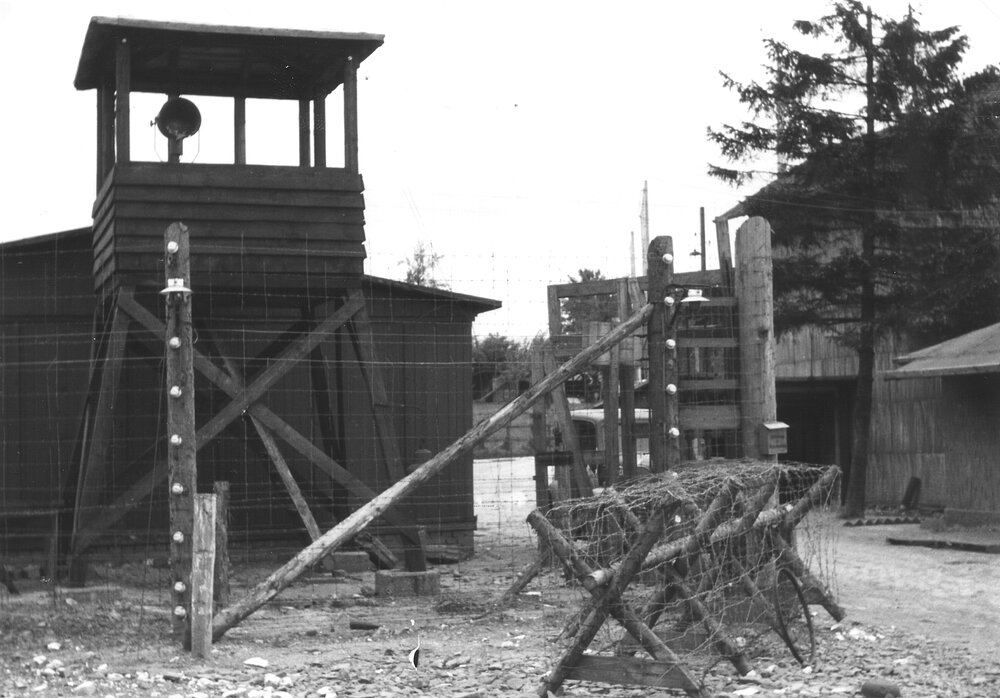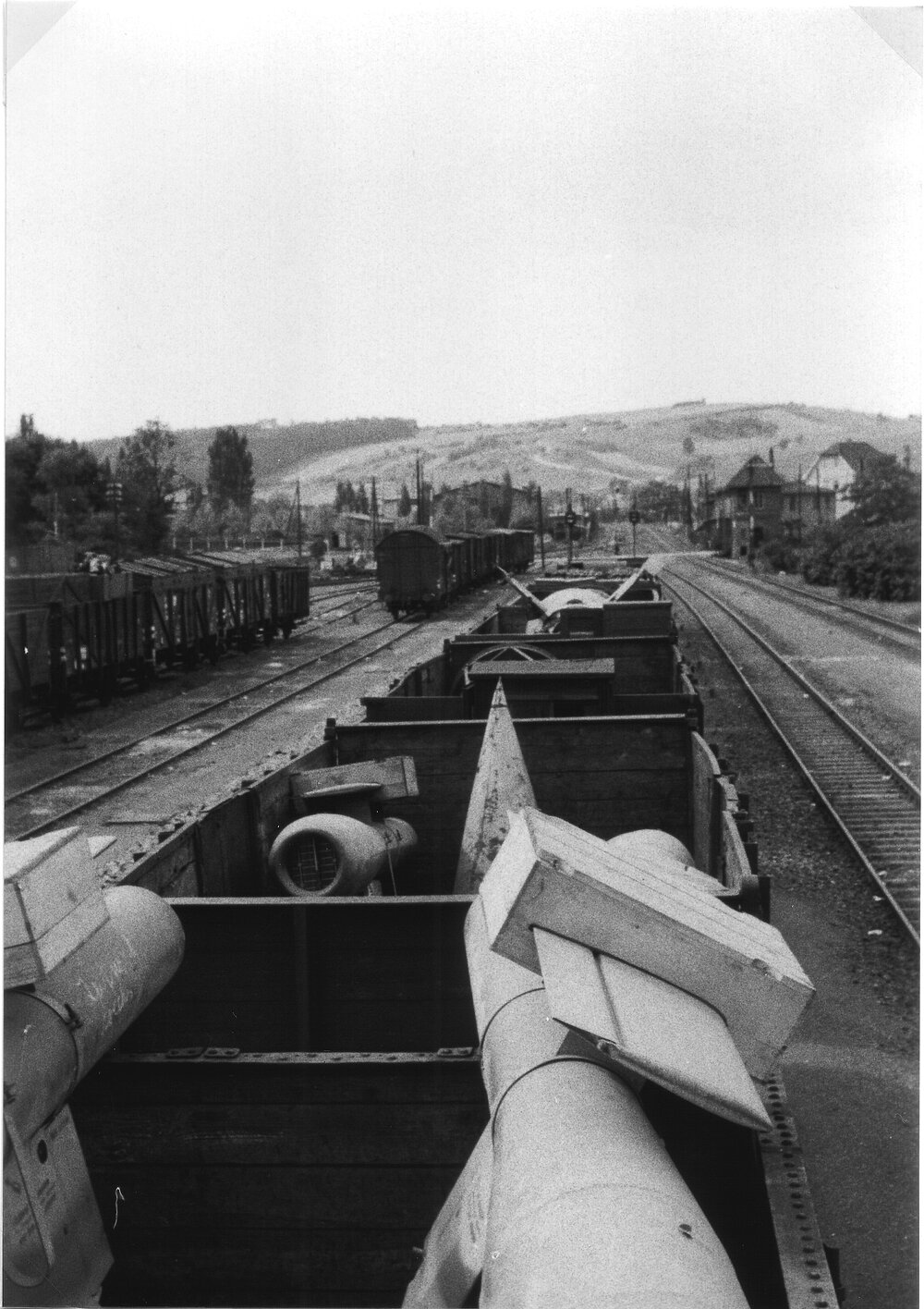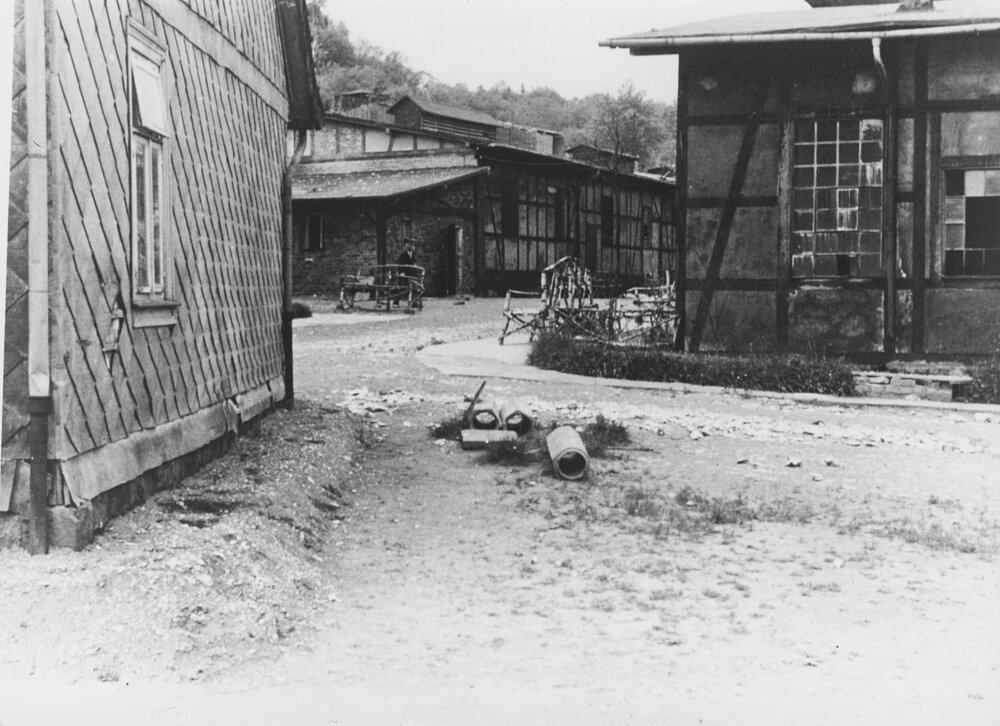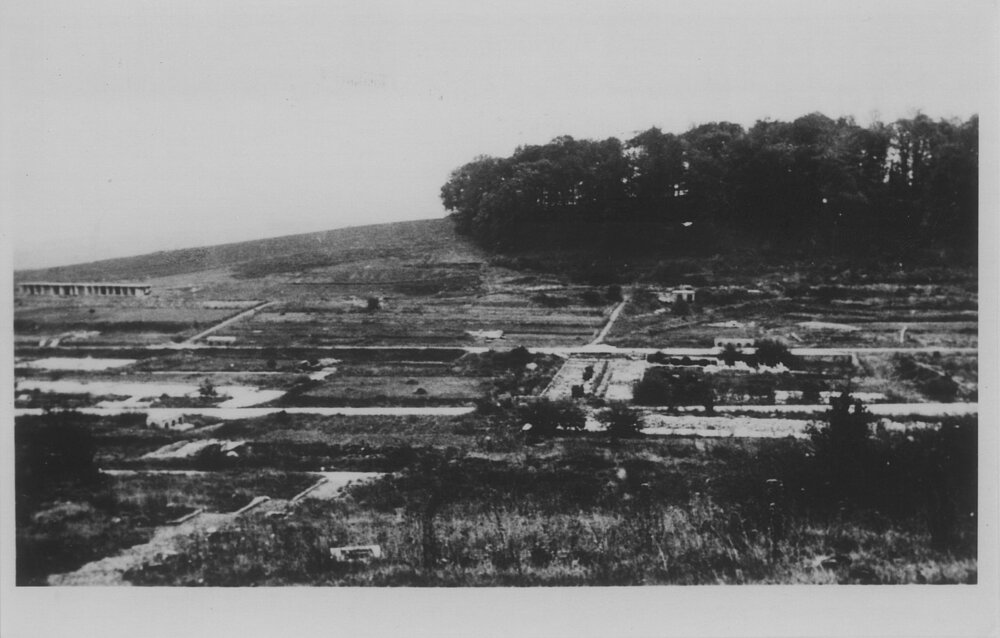#otd1945.06.08
The Camps’ Disappearance
On this day – Friday, 8 June 1945 –, the American signal officer Georges Phillips was in the region around Ellrich and Nordhausen. Eight weeks after the liberation, he was there to photograph the former Dora and Ellrich-Juliushütte concentration camps.

Photo: George Phillips (Collection of K.-H. Schwerdtfeger)
Among his photos are views of the former tunnel facility in Kohnstein Mountain and the Ellrich-Juliushütte camp grounds. Some document the removal of rocket technology from the tunnels; others show inmate lodgings. Not long afterward, many traces of the camp in which tens of thousands had suffered were no longer visible.

Photo: George Phillips (Collection of K.-H. Schwerdtfeger)
The Belgian survivor Jozef Huybreghts also documented the camps’ disappearance photographically. He visited Ellrich in 1946 and took pictures of the decaying camp buildings.

Photo: Jozef Huybreghts (Private property of the Huybreghts family)
When he returned twelve years later, only fragments of the foundations remained. The inner-German border now cut straight through the grounds, and the structural relics had been gradually removed over the years. On the eastern side, the German Democratic Republic border police had begun clearing the site of the former inmate lodgings in 1952 as part of the measures to secure the border. On the western side, the Federal Border Guard blew up the remnants of the camp, including the former crematorium, in 1964.
Traces of the concentration camp history also vanished in Dora within a few years after the liberation. Initially the grounds were used as a DP camp, then as a repatriation camp, and later as a reception camp for German expellees. The demolition of the barracks got underway in the autumn of 1946, at which time the crematorium, the fire station, and the camp prison were left standing. Starting in 1947, parts of the tunnel facilities – above all the entrances – were also blasted. After the local authorities had the prison torn down in 1952, virtually nothing was left to be seen of the onetime camp.

Remains of the detention cell building are visible in the background at the left.
(Landesarchiv NRW – Abteilung Rheinland)
The fates of the Ellrich-Juliushütte and Dora camp facilities are representative of those of many other former concentration camps in Germany. In most cases the camp buildings were demolished shortly after the end of the war, and remnants of their foundations are all that testify to the history of the concentration camp today. Smaller camps often disappeared almost entirely; at best, monuments or commemorative plaques now serve as reminders of their existence. Other camps remained intact and took on new functions. The barracks of the Blankenburg-Oesig subcamp, for example, served as emergency lodgings for expellees. Having undergone multiple alterations over the past decades, they are still inhabited by private persons today.
(Anett Dremel)
